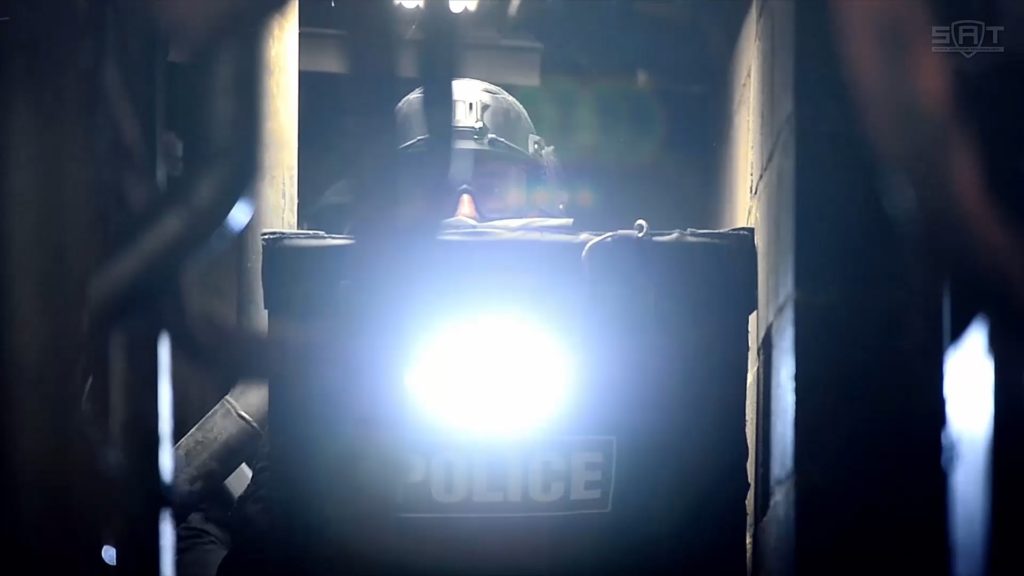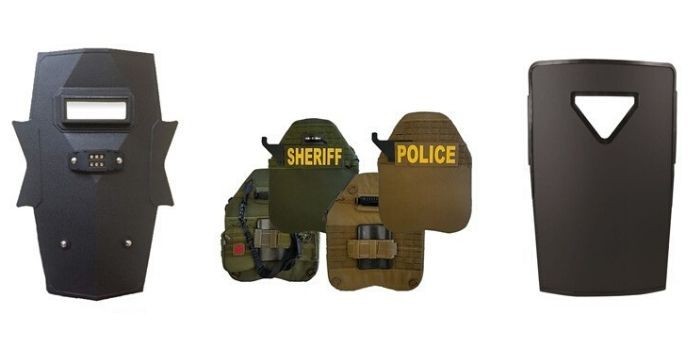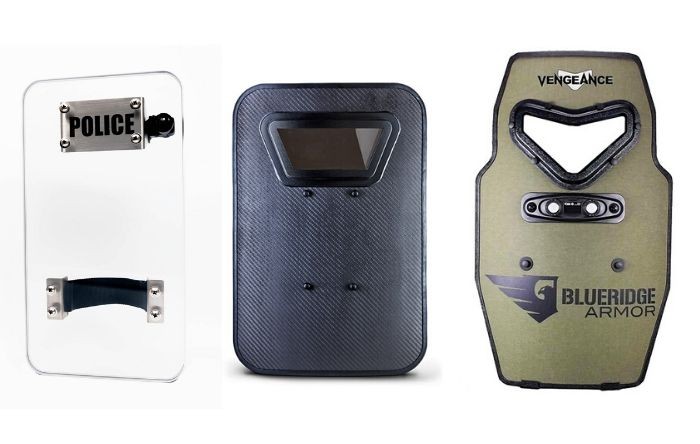Shop by Industry
Industries we support...
Products
START SHOPPING...
EXPLORE by category
Product Series
Resources
Contact
Find a Dealer
Shield lighting is a non-lethal tool that provides the operator with a tactical advantage. Because lighting is positioned outside of ballistic shields, it needs to be ultra-durable to withstand impacts (from projectiles, bumps, etc.), water, or chemicals.

With lighting for ballistic shields, operators need to turn on and off quickly as usually it's only needed for brief intervals at critical times. The pressure switch must be quickly and easily accessible to the operator.
High-powered solid-on illumination helps the operator to see obstacles, threats, and small details while also forcing the subject to look away or turn around. Strobe lighting can also disorient the subject and provide the officer with a huge tactical advantage.
Some lights can be securely clamped (FoxFury Taker B10) or mounted with industrial Velcro (FoxFury Taker B30 and B50) to the shield. These aftermarket lights provide high performing wide beam angles that help operators increase vision compared to weapon-mounted lights. Ballistics are also NOT compromised since no drilling is needed to install. A remote pressure switch is used for activating momentary and tactical light settings, and the built in kill switch prevents accidental illumination.
Some lights (like the FoxFury Taker B70 and Elzetta Shield Light) can be fully integrated into the shield. The big advantage here is there are NO exposed cables, and the ambidextrous power/mode switch is on the handle. Batteries are also located inside the handle. The downside to these models that they should ONLY be installed by the shield manufacturer, so the ballistic rating is maintained and can’t be purchased or installed after an agency has shields in the field. This integrated lighting solution is wonderful when law enforcement can plan purchases to include the lights, but not an option for use as an aftermarket light.
Light placement on the shield is also important. This will be covered in a separate article, but there are advantages and limitations to mounting the light towards the shield's top, middle, and size. Training and working out the pros/cons for the combination of the light and operator duties with the shield
Given the added protection conveyed, ballistic shields are priced higher than polycarbonate riot shields. Some of the smaller shields are in the $500 - $1,000 (USD) range. Most shields are priced between $1,000 and $4,000 (USD), with some of the larger and rolling, mobile ballistic shields costing more than $5,000.
As any law enforcement officer will tell you, it is critical to know your tools. SWAT trains a great deal, so they know how to use the tools at their disposal properly and can deploy them in dangerous situations where lives are on the line. Knowing how tools function independently and in conjunction with other gear greatly improves speed and decision making.
Training with the ballistic shield in different training scenarios helps the operator make sound judgments. As with any special equipment, it is best to study the owner's manual and know its advantages and limitations while in a classroom setting.
Some companies have agency and team-specific shield training available with their shields, like Vector Police Shields. There are different training organizations worldwide, like Guardian Centers and the National Tactical Officer's Association (NTOA), that provides online and field training.
Incorrect shield usage can result in possible injury and death. It can also void the warranty.
Warranties are guaranteed against defects but will not cover damage from misuse, abuse, or damage from threat levels beyond what the shield was rated for. They may also not cover damage brought on by poor storage (extended time in a vehicle or trunk), resulting in the shield being subjected to extreme temperatures. Drilling or cutting holes into the shield or using non-approved chemicals, solvents, and cleaning agents will also void the warranty.
Warranties on shields vary tremendously by manufacturer, ranging from 5 to 25 years. As with any warranty, the devil is always in the details, and the warranty is only as good as the company’s word and reputation. For that reason, dealing with trusted, reputable shield manufacturers and distributors gives peace of mind and results in better service.
How long do ballistic shields last?
According to some of the manufacturers consulted for this article, ballistic shields are replaced every 5 - 8 years with standard use. Normally the items will last past these periods, but the material fibers may get rigid, and the items may not provide optimal protection for the end-users. For this reason, it's important to inspect shields periodically and store them properly.
When should ballistic shields be replaced?
Depending on the make and model, some components like lights and viewports can be field replaceable. Shields should be replaced when warped, cracked, damaged, or pierced.
Several shield manufacturers offer ballistic shields. Here are some innovative shields with different sizes, designs, and purposes.


There are several ballistic shield manufacturers. This list includes some reputable OEM shield manufacturers and original designers. Knock off, or generic shield products are not included.
In the end, Police Departments, Sheriff Offices, and other Law Enforcement personnel should select ballistic shields based on the unique threats they face while considering the level of protection, shield size, and need for speed. Continuous training is highly recommended to build operator muscle memory and confidence deploying shields in critical situations.
Lastly, a special thanks to Mark Cardey (The Safariland Group), Paul Banducci (United Shield International), Mike Ott (Point Blank Enterprises), Chris Sfedu (EDI-USA), James Steffen, Kristina Lorinc (Vector Shields), ATT-Tactical and HighCom Armor for their assistance with this article.



Enter your details below to save your shopping cart for later.